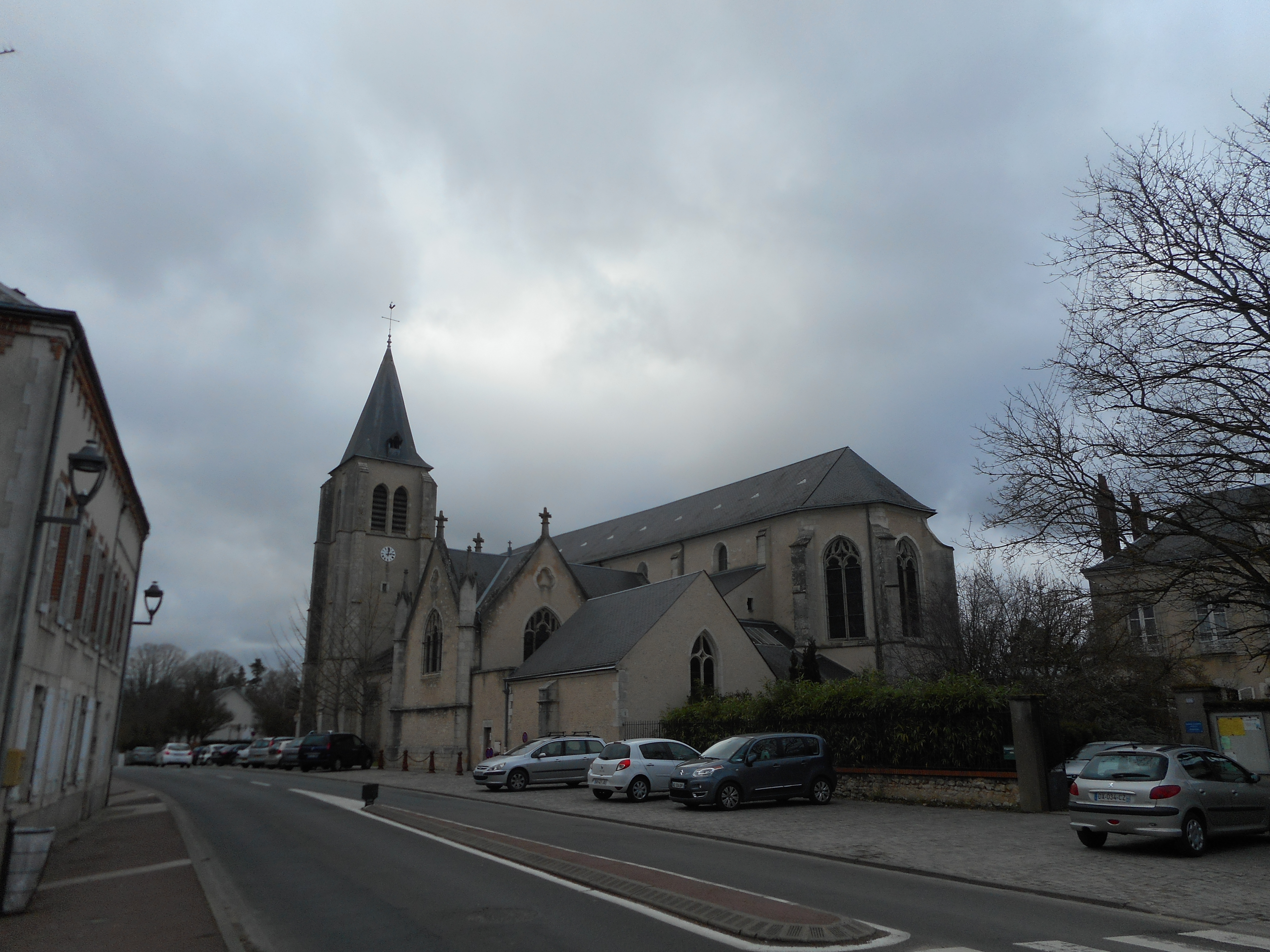Le premier nom du village était Saint-Martin-du-Loiret. Une chapelle y est attestée en 990, dans une charte d’Hugues Capet, où elle est mentionnée parmi les possessions du chapitre de la cathédrale Sainte-Croix d’Orléans.
En 1152, Louis VII offre les revenus de l’église Saint-Samson d’Orléans à l’abbaye Notre-Dame du Mont Sion de Jérusalem. Parmi ces revenus se trouvaient des terres sur les bords du Loiret sur lesquelles se trouvait Saint-Martin. Ils apportent le nom d’Olivet et l’église devient Saint-Martin d’Olivet sur Loiret (Olivet vient probablement du Mont des Oliviers).
Le village subit de nombreuses destructions durant la guerre de Cent ans. Le nom de Saint-Martin est abandonné durant la Révolution française, le village ne gardant que le nom d’Olivet.
L’église actuelle date du XIIIe siècle. Elle a conservé trois travées gothiques, a été agrandie aux XVe et XVIe siècles d’un bas-côté nord et d’un nouveau chœur, et a connu des restaurations au cours du XIXe siècle, avec une nouvelle façade occidentale et des chapelles latérales.
L’église abrite un autel Saint-Martin avec statue en bois polychrome du XVIIe siècle (acquise par le curé Greffin, elle représentait à l’origine saint Eutrope, évêque de Saintes), un tableau figurant une charité de saint Martin, un tableau figurant un miracle de saint Martin se trouve au rez de chaussée de la tour, datant de la fin du XVIIIe siècle
L’église abrite également un vitrail figurant une charité de saint Martin, un autre figurant une translation de saint Martin entre Candes et Tours et un vitrail représentant l’abbaye de Marmoutier. Ces vitraux ont été réalisés entre 1950 et 1960 par l’entreprise parisienne Mauméjean puis le verrier d’Étampes Legrand. Ils remplacent des vitraux réalisés entre 1850 et 1870 détruits en 1944 lors de la libération d’Orléans.
L’église abrite une relique du manteau de saint Martin. Elle provient du trésor de la cathédrale d’Auxerre d’où elle fut envoyée en 1567 par le chanoine Pierre Beaulieu, originaire d’Olivet. Découverte et aussitôt cachée à la Révolution par un ouvrier chargé de supprimer les emblèmes religieux de l’église, elle fut restituée plus tard à la paroisse d’Olivet qui fête l’événement le 8 juillet 1860 (fête de la translation des reliques). En 1890, Maurice Prou émet l’hypothèse que la relique vient d’un habit porté par st Martin et conservé par les fidèles. La châsse est scellée en 1961 dans la chapelle St Joseph. Elle est désormais conservée dans une armoire et donnée à la vénération des fidèles chaque 11 novembre.
L’église Saint-Martin d’Olivet est inscrite aux Monuments historiques le 20 mars 2008 PA00098835.
The first name of the village was Saint-Martin-du-Loiret. A chapel is attested to in 990, in a charter of Hugues Capet, where it is mentioned among the possessions of the chapter of the Sainte-Croix cathedral in Orléans.
In 1152, Louis VII offered the revenues of the church of Saint-Samson in Orléans to the abbey of Notre-Dame du Mont Sion in Jerusalem. Among these revenues were lands on the banks of the Loiret where Saint-Martin was located. They brought the name Olivet and the church became Saint-Martin d’Olivet sur Loiret (Olivet probably comes from the Mount of Olives).
The village suffered a lot of destruction during the Hundred Years’ War. The name Saint-Martin was abandoned during the French Revolution, and the village kept only the name Olivet.
The present church dates from the 13th century. It has retained three Gothic bays, was enlarged in the 15th and 16th centuries with a north aisle and a new choir, and was restored in the 19th century with a new western façade and side chapels.
The church has a 17th century polychrome wooden statue of St Martin (acquired by the parish priest Greffin, originally depicting St Eutrope, Bishop of Saintes), a painting of a charity of St Martin, a painting of a miracle of St Martin on the ground floor of the tower, dating from the late 18th century
The church also houses a stained glass window depicting a charity of Saint Martin, another depicting a translation of Saint Martin between Candes and Tours and a stained glass window depicting the abbey of Marmoutier. These windows were made between 1950 and 1960 by the Parisian company Mauméjean and then the Étampes glassmaker Legrand. They replace stained glass windows made between 1850 and 1870 which were destroyed in 1944 during the liberation of Orléans.
The church houses a relic of Saint Martin’s cloak. It comes from the treasury of Auxerre cathedral, from where it was sent in 1567 by Canon Pierre Beaulieu, a native of Olivet. Discovered and immediately hidden during the Revolution by a worker in charge of removing the religious emblems from the church, it was later returned to the parish of Olivet, which celebrated the event on 8 July 1860 (the feast of the translation of the relics). In 1890, Maurice Prou suggested that the relic came from a garment worn by St Martin and kept by the faithful. The shrine was sealed in 1961 in the chapel of St Joseph. It is now kept in a cupboard and given to the faithful for veneration every 11 November.
The church of Saint-Martin d’Olivet was listed as a Historic Monument on 20 March 2008 PA00098835.

 "/>
"/>




